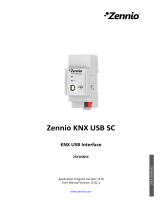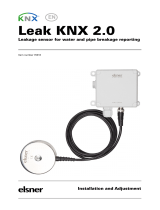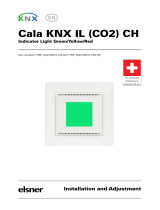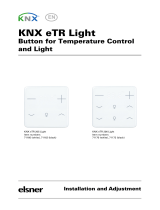Notes:
If [Minimum] ≥ [Maximum], limits will not be taken in account in Auto mode
due to the incongruity. In this case, default values will be used.
These parameters only can be set as integer values in ETS. However, at run
time the associated objects allow decimal values.
REFERENCE TEMPERATURE
To control the temperature setpoint, the following objects are enabled by default:
Figure 8. AC Gateway. Configuration. Reference temperature.
External Reference Temperature Object [disabled/enabled]: enables the
“[AC] External Reference Temperature” 2-Byte object, which provides the
value of an external temperature sensor, which is used by the AC machine
as the reference to execute the control loop.
If during 3 minutes, no temperature values are received, values of the
internal probe will be recuperated again to execute temperature control, in
the same way as it will be controlled if KLIC-TS was configured disabling this
option. If a new external temperature value is received, the control will be
again executed by using this external value. The values allow to be received
in this object are include in [0-70] ºC (if different values are received, they will
be ignored).
Actually, the machine will continue to executing its control loop with the same reference
temperature, but the KLIC will send an adjusted temperature setpoint following the
following formula:
Adjusted setpoint temperature = Setpoint temp. + [AC measured temp. – External
reference temp.]
Important: If the external reference temperature is enabled, it is recommended not to
use the wired remote control or, failing that, not to change the setpoint from it.


































